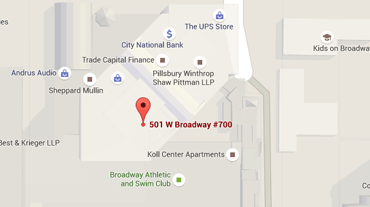Acts involving the use or threat of force that cause harm or injury to another person constitute violent crimes. These offenses typically include intentional physical harm or the potential for such harm.
If convicted of a violent crime, you risk facing severe consequences. These include stringent imprisonment, substantial fines, and other penalties surpassing those for misdemeanor violations and other felonies. The gravity of the punishment depends on the extent of violence, the presence of weapons, and your criminal history.
At the Law Offices of Anna R. Yum, we understand the gravity of violent crime charges. We will work on challenging the charges to secure a favorable outcome. Contact us if you are facing prosecution for violent offenses in San Diego.
Free Consultation (619) 233-4433
Violent Crimes
Violent crimes can target either individuals or property. The classification of a crime as violent depends on the nature of the act and the level of force employed, whether directed towards individuals or property.
Crimes Against Individuals
When directed against individuals, they involve the use or threat of force resulting in harm. These offenses could include:
-
Assault
Assault is the unlawful attempt, coupled with a present ability, to cause a violent injury to another person. There are different degrees of assault, including simple assault and aggravated assault.
Simple assault involves attempting to cause a violent injury without additional aggravating factors. Simple assault is a violation of Penal Code 240. Aggravated assault encompasses circumstances such as:
- Assault on a peace officer or police officer — Any assault directed at a peace officer or police officer is a violation of Penal Code 241. However, police officers or emergency personnel should be on duty at the time of the assault.
- Assault with caustic chemicals — PC 244 makes it a crime to assault another with caustic chemicals. These materials can burn, corrode, or destroy living tissues, materials, or other substances upon contact.
- Assault of another individual with a deadly weapon — This offense violates Penal Code 245(a)(1). A deadly weapon can encompass various items, such as knives or blunt objects, depending on their potential for harm.
- Assault with a firearm — The crime violates Penal Code 245(a)(2). This section only addresses assault cases involving firearms.
Potential Penalties for Assault
Simple assault is a misdemeanor violation. A conviction results in the following penalties:
- Up to six months in jail
- A maximum fine of $1,000 or both
Convictions for aggravated assault result in varying felony penalties. These include the following:
- Imprisonment of two, three, or four years
- Up to $10,000 in fines or both
-
Battery
Battery involves the deliberate and unlawful application of force or causing bodily harm to another person. Unlike assault, which encompasses threats or attempts to commit violence, battery specifically entails physical contact resulting in injury.
Battery could be simple or aggravated. Simple battery is a violation of Penal Code 242. Aggravated battery could include aggravating circumstances, including:
- Battery on a police or peace officer — A violation of PC 243(b)
- Battery that results in serious bodily injury — A violation of PC 243(d)
- Battery directed on a spouse or a cohabiting partner — A violation of PC 243(e)
Potential Penalties for Battery
Simple battery is a misdemeanor offense. Convictions result in the following penalties:
- A maximum of six months in jail
- Up to $2,000 in fines
Aggravated penalties could result in varying penalties, including:
- An imprisonment of up to four years
- A maximum of $10,000 in fines
-
Murder
Under Penal Code 187, murder is the intentional and unlawful killing of a fetus or a human being with malice aforethought. Malice aforethought is the deliberate intention to cause the death of another individual. Murder falls into two main categories:
First-Degree Murder
First-degree murder involves willful, deliberate, and premeditated killings. It also includes killings that are committed when the offender is engaged in certain felonies like robbery, burglary, kidnapping, or arson. This category is referred to as felony murder.
You could also be charged with first-degree murder when you kill another individual in the following circumstances:
- The killing is gang-related
- You killed a protected individual, including law enforcement officers, judicial officers, firefighters, and elected officials.
- The killing aimed to prevent a witness from testifying
- The killing was racially motivated or linked to the victim’s religion, color, nationality, or country of origin. These killings are considered hate crimes.
- For financial gain, or
- It was a consequence of a drive-by shooting
Penalties of First-Degree Murder
First-degree murder carries a sentence of 25 years to life in prison. The sentence becomes a life sentence without the possibility of parole if it was a hate crime.
On the other hand, should you be convicted of capital murder, you will face a life sentence without the possibility of parole.
Second-Degree Murder
This offense encompasses all other types of murders that don’t meet the criteria for first-degree murder. Typically, it involves willful killings without planning or killings resulting from a reckless disregard for human life.
Penalties for Second-Degree Murder
Second-degree murder convictions attract 15 years to life in prison. However, the penalties could increase if there are aggravating factors. Here is a breakdown of the likely penalties:
- If the victim is a peace officer, police officer, or any other protected individual, you will receive a prison sentence of 25 years to life.
- If the victim is a peace officer, police officer, or any other protected individual, and you intend to inflict serious bodily harm, murder the victim, or use a firearm or a deadly weapon in the process, you will receive a life sentence without the possibility of parole.
- A prior murder conviction will result in an automatic life sentence without the possibility of parole.
- If you shot from a car and intended to inflict serious bodily injury, a conviction will result in 20 years to life in prison.
-
Manslaughter
Manslaughter is the unlawful killing of a human being without premeditation or intent to cause death. It is a violation of Penal Code 192. Manslaughter can occur in any of the following forms:
Voluntary Manslaughter
Voluntary manslaughter involves intentionally causing the death of another person under circumstances that mitigate culpability. Voluntary manslaughter often occurs in the heat of the moment or due to a sudden, intense emotional response. It is a violation of PC 192(a).
Involuntary Manslaughter
Involuntary manslaughter results from reckless or negligent behavior leading to death without the intent to cause harm. Actions lack premeditation but demonstrate a disregard for the safety of others. It is a violation of PC 192(b).
Vehicular Manslaughter
Vehicular manslaughter is the unlawful cause of another person’s death in a vehicle. This offense occurs when someone operates a vehicle with criminal negligence or engages in an illegal act, resulting in a fatality.
Vehicular manslaughter, a violation of PC 192(c), is broadly classified into two types: misdemeanor and felony.
-
Misdemeanor Vehicular Manslaughter
Misdemeanor vehicular manslaughter involves causing a person’s death due to ordinary negligence while driving, signifying a failure to exercise reasonable care. Ordinary negligence occurs when you fail to meet the standard of care expected from a reasonably prudent person in similar circumstances. A lack of reasonable care could lead to harm or injury to others.
-
Felony Vehicular Manslaughter
Felony vehicular manslaughter involves causing a person’s death while driving under the influence of alcohol or drugs (DUI) or with gross negligence, indicating a reckless disregard for others’ safety.
-
Vehicular Manslaughter While Intoxicated
Per Penal Code 191.5(a), it is a crime to cause the death of another person while operating a vehicle under the influence of alcohol or drugs. Prosecutors must prove that the defendant’s intoxication significantly contributed to the fatal outcome.
As per California’s Penal Code Section 191.5, there are two categories of vehicular manslaughter while intoxicated:
- Gross vehicular manslaughter while intoxicated — It involves the unlawful killing of a human being without malice aforethought while driving under the influence of alcohol or drugs. The killing could be either the result of an illegal act, not amounting to a felony, or committed with gross negligence. Alternatively, it could also result from a lawful act done unlawfully, also with gross negligence.
- Vehicular manslaughter while intoxicated — Encompasses the unlawful killing of a human being without malice aforethought while driving under the influence.
The killing is either the result of an unlawful act, not amounting to a felony, committed without gross negligence, or the result of a lawful act done unlawfully but without gross negligence.
Potential Penalties if Convicted of Manslaughter
Voluntary manslaughter is a felony. Convictions result in the following penalties:
- 3, 6, or 11 years in prison
- A fine of up to $10,000 or both
- A strike per California’s Three Strikes Law
Involuntary manslaughter is a felony. Convictions result in the following penalties:
- 2, 3, or 4 years in prison
- A fine of up to $10,000 or both
Vehicular manslaughter with gross negligence is a wobbler offense. If you are convicted of a misdemeanor violation, you will face the following penalties:
- Up to one year in jail
- A maximum of $1,000
If you are convicted of a felony violation, you will face the following penalties:
- 2, 4, or 6 years in prison
- A maximum of $10,000
-
Rape
Rape is a grave offense. Penal Code 261 defines rape as engaging in sexual intercourse with another person without their consent. The primary elements of the crime
- Lack of consent — Consent is pivotal, necessitating a voluntary, mutual, and informed agreement to partake in sexual activity. The lack of this consent will lead to rape charges.
- Force, fear, or intoxication — Instances of rape involve scenarios where force, fear of immediate bodily harm, or the victim’s inability to provide legal consent due to intoxication or unconsciousness are present.
Rape can occur in various ways. It could involve:
- The violation of an unconscious person
- Rape of a minor
- Spousal rape and
- Rape perpetrated in collaboration with others
Penalties for Rape
Rape is a felony. A conviction will result in the following:
- Three, six, or eight years in prison
- Lifetime registration as a sex offender
- A Strike per California’s Three Strikes Law
If the victim is a juvenile under 13 years old, you could face up to 13 years in prison. If the victim is between 14 and 17, a conviction will result in 11 years in prison.
If you are convicted of spousal rape, you will receive the penalties outlined under PC 262. These penalties include the following:
- Up to eight years in prison
- Up to $10,000 in fines
-
Kidnapping
Kidnapping is the illegal seizure, confinement, or transportation of another person against their will. This offense involves using force, threats, intimidation, or deceit to restrict the victim’s freedom and control their movements. Kidnapping is a violation of PC 207.
Essential elements of kidnapping include:
- Seizing or restraining someone without legal justification.
- Taking the property against the owner’s or possessor’s will
- Use of force, fear, or fraud — Kidnapping involves physical force, the threat of harm, or deceptive tactics to achieve the act.
- Movement or detention — Kidnapping often entails relocating the victim over a significant distance or holding them against their will in a particular location.
You also run the risk of facing aggravated kidnapping charges. Per Penal Code 209, aggravated kidnapping involves the deliberate and unlawful act of moving or detaining another person. The crucial factor is the presence of intent, whether to commit specified serious felonies, including robbery and rape, or to obtain a ransom, reward, or extortion.
Penalties for Kidnapping
If you are convicted of simple kidnapping under PC 207, you risk facing the following penalties:
- 3, 5, or 8 years in prison
- A fine of up to $10,000
Aggravated kidnapping is also a felony. Convictions result in the following penalties:
- 5, 8, or 11 years in prison if the victim is under 14 years old
- Life with the possibility of parole if you kidnap another individual for ransom
- Life without the possibility of parole if you kidnap another individual for ransom, extortion, or reward and:
- The victim suffers injury or death
- The victim is exposed to situations that are likely to result in death or a significant risk of death.
- A strike per California’s Three Strikes law
Crimes Against Property
Alternatively, violent crimes against property entail the use of force or the threat thereof to cause damage or destruction.
-
Arson
Penal Code Section 451 defines arson as the intentional and unlawful act of setting fire to a structure, forest land, or property. The offense is categorized into several degrees, each with distinct elements and potential consequences:
- Arson of property — Per Penal Code 451(a), arson of property involves willfully and maliciously setting fire to any structure, forest land, or property.
- Aggravated arson — Per Penal Code 451(b), aggravated arson involves setting fire to an inhabited structure or causing significant bodily harm.
- Arson of Forest Land — Arson of forest land, per Penal Code 451(c), involves willfully and maliciously setting fire to forest land.
Potential Penalties if Convicted of Arson
Arson is a felony offense. The penalties vary depending on whether an individual sustained an injury or the type of property burned. Convictions are punishable by the following penalties:
- Imprisonment for 16 months, two years, or three years if found guilty of arson on personal property
- Imprisonment for two, four, or six years if found guilty of arson on forest land or a structure
- A prison sentence of three, five, or eight years if found guilty of arson of an inhabited structure
- A prison sentence of five, seven, or nine years if found guilty of arson that results in great bodily injury
-
Robbery
Robbery, as defined by Penal Code 211, involves the felonious taking of personal property in the possession of another person or immediate presence against their will, achieved through force or fear.
Essential components of robbery under Penal Code 211 include:
- Felony act — The act of taking personal property must be carried out with the intent to commit theft.
- Force or fear — The use of force, violence, or intimidation is a critical aspect of robbery. This force, or fear, is applied to overcome the victim’s resistance or prevent them from resisting.
- Immediate presence — The property is taken either directly from the person or their immediate presence. This implies it can occur in the victim’s physical proximity, even if the property is not directly on their person.
Robbery is categorized into two degrees: first-degree and second-degree.
First-Degree Robbery
First-degree robbery involves robbing individuals performing their duties as drivers of buses, cable cars, taxis, streetcars, or any other vehicle. First-degree robbery also includes robbing individuals within inhabited structures or those who have just used an ATM or are in the ATM’s vicinity.
Second-Degree Robbery
Second-degree robbery encompasses all other instances of robbery that do not meet the criteria for first-degree. These include robberies of individuals not in specific occupations or within inhabited structures.
Potential Penalties if Convicted of Arson
You risk facing the following penalties if convicted of first-degree murder:
- Three, four, or six years in prison
- A maximum fine of $10,000
You risk facing the following penalties if convicted of second-degree murder:
- Two, three, five years in prison
- A maximum fine of $10,000
Note: Convictions also result in additional penalties if you used a firearm or caused the victim(s) to sustain an injury.
-
Burglary
Burglary, as outlined in Penal Code Section 459, is the act of unlawfully entering a building or property with the specific intent to commit theft or a felony inside. The fundamental elements of burglary include unauthorized entry into any structure with the concurrent intention of committing theft or a felony.
This offense is classified into two categories:
- First-degree burglary — This involves the unlawful entry into a residence, for example, a house or inhabited dwelling.
- Second-degree burglary — Encompasses the unauthorized entry into any other structure that does not qualify as a residence.
Penalties Upon Conviction
The penalties for a burglary offense vary depending on the degree of burglary you are convicted of.
First-degree burglary convictions result in felony penalties, including:
- 16 months, two or three years in jail
- A maximum fine of $10,000
Second-degree burglary convictions result in felony penalties, including:
- Up to one year in jail
- A maximum fine of $1,000
-
Extortion
Extortion is a crime per PC 518. It involves obtaining money, property, or services from someone through coercion or force. The fundamental elements include pressuring the victim to willingly surrender their belongings or comply with demands through threats, intimidation, or other forms of duress.
Key points about extortion include:
- Consent under duress — Victims give consent, but it is coerced, as they comply due to fear of harm or consequences if they refuse.
- Threats or coercion — Extortion often employs threats, coercion, or intimidation, for example, violence or harm to one’s reputation.
- Property or services — Extortion entails demanding money, property, services, or other valuable items. Services also include sexual favors.
Penalties Upon Extortion
Extortion is a felony offense. A conviction results in the following penalties:
- An imprisonment of up to four years
- A fine of up to $10,000
Attempted extortion is a violation of Penal Code Section 524. It involves trying to obtain property or other consideration from someone through threats outlined in Section 519 of the Penal Code. This offense centers on taking steps to commit extortion without completing the full act.
Key aspects of attempted extortion include:
- Attempted act — Offenders attempted to commit extortion but did not fully carry out the offense.
- Threats — Threats should align with PC 519. This can include threats of violence, harm to property, accusations, or any wrongful act causing harm.
- Intent — A clear intent must be to extort property or consideration through threats.
Attempted extortion is a wobbler offense. If convicted of a misdemeanor violation, you risk facing the following penalties:
- Up to one year in jail
- Up to $10,000 in fines
If convicted of a felony violation, you risk facing the following penalties:
- 16 months, 2, or 3 years in prison
- Up to $10,000 in fines
Contact a Criminal Defense Attorney Near Me
Violent crimes bring serious risks and carry potential consequences that will impact you significantly if you are convicted. Consequently, law enforcement officers and prosecutors aggressively pursue convictions. The aggressive pursuit of convictions amplifies the risk of wrongful imprisonment or infringement upon your rights. Safeguarding against these errors is paramount. You thus require an aggressive criminal defense attorney in your case. Your attorney will equally aggressively fight to secure the best legal outcome.
Should you face charges for a violent crime in San Diego, count on the expertise and experience of our team at the Law Offices of Anna R. Yum. Call us at 619-493-3461 to secure solid legal defense.











